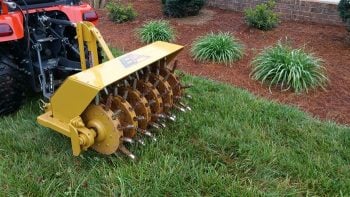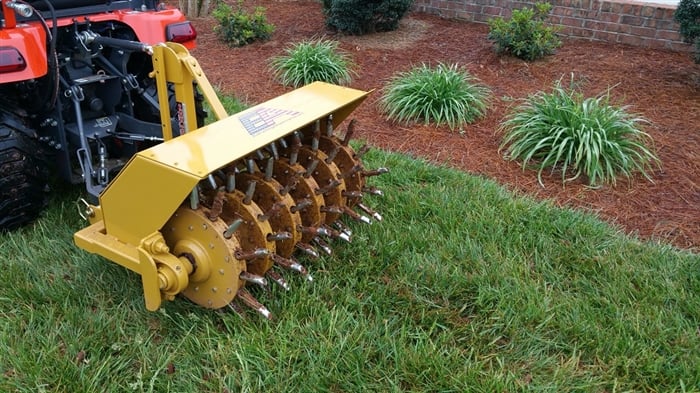 Winter lawn maintenance can require a bit more than usual here in North Texas, where our winters tend to be mild. Plants, including turf grass, typically go dormant at around 50 degrees Fahrenheit. But we all know low temperatures can be inconsistent in this region.
Winter lawn maintenance can require a bit more than usual here in North Texas, where our winters tend to be mild. Plants, including turf grass, typically go dormant at around 50 degrees Fahrenheit. But we all know low temperatures can be inconsistent in this region.
In addition to occasional winter growth, there are a few other chores to be done, to prepare your lawn for springtime. For year-round help with lawn care tasks, reach out to Plano Sod for a free service quote.
Mowing Your Lawn
Most professionals recommend gradually reducing your blade height over the final 2 or 3 mowing sessions in late fall or early winter. If you notice a bit of winter growth, you’ll know it’s time for a fresh mow if the blades exceed 2-2.5 inches. This is an ideal height to avoid mold while insulating the topsoil.
If you decide to mow your lawn, be sure you pick a dry day with no recent precipitation. Any fallen leaves can be left where they lay rather than raking beforehand, as they will simply provide a boost of natural mulch when you mow over them. If you’re needing a good mower for smaller yards, be sure to check out this helpful guide.
Aerating
This isn’t a task that every lawn needs every year, but it can be beneficial for turf grasses that tend to get thatchy. Your lawn’s nutrients shift underground during the winter, to focus on strong root growth. A thatchy bed makes it harder for your topsoil to breath, which can be detrimental to the root system.
Aerating should be done before the first frost, so early January may or may not be too late to take on this winter chore. You can easily rent a core aerator from your local garden shop.
Pruning and Cleaning
Once all the leaves have fallen from your trees and shrubs, it’s easier to see which limbs and branches may be dead or struggling. Doing this early in the season helps prevent the spread of potential diseases. When removing a larger branch from a tree, be sure you saw into the bottom half first, and sever it as close to the trunk as possible.
Cleaning out the bed of your garden, and beneath your shrubs, is good for preventing rot and starving your soil. Any heavy debris that’s left to sit all winter can suffocate your topsoil, and breed harmful mold and algae.
Weed Prevention
Invasive plants are often far more winter-hardy than the grasses, flowers and veggies you actually want in your yard. While propagating a dense and healthy lawn is the best form of prevention, errant weeds can still crop up any time of year.
When using a spot treatment, it is imperative to be extra careful during the winter, so as not to harm any nearby plants or grasses that have gone dormant in the cold weather. Using a narrow trowel for manual removal may be your best option for minor issues. If you’ve had problems with crabgrass in the past, consult a professional about when and how to apply a pre-emergent before active growth sets in as the weather warms up.




